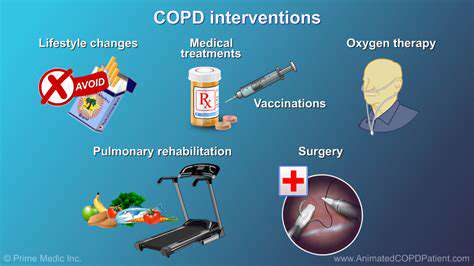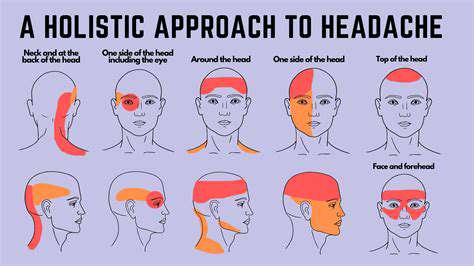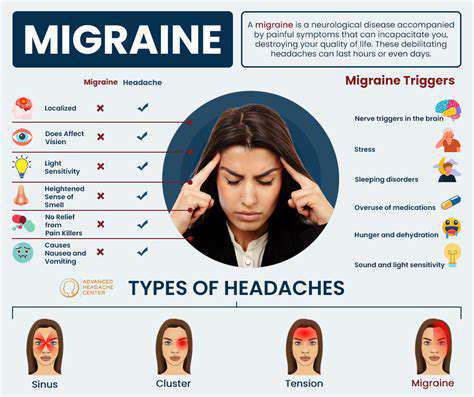Back of Head Behind Ear Hurts: Understanding Symptoms
Index
Muscle strain is a common cause of ear pain.
Infections like mastoiditis can lead to ear discomfort.
Nerve compression may result in pain behind the ear.
Ear disorders like otitis externa can complicate symptoms.
Allergic reactions can cause inflammation around the ear.
Pain may also be referred from dental or neck issues.
Monitor symptoms like dizziness for accurate diagnosis.
Seek help for persistent or worsening ear pain.
Home remedies include warm compresses and proper posture.
Consult a healthcare provider for severe accompanying symptoms.
Possible Causes of Pain Behind the Ear
Muscle Strain and Tension
One common cause of pain behind the ear is muscle strain or tension, often resulting from poor posture or stress. When the muscles in the neck and shoulders are tight, they can indirectly irritate the area around the ear, leading to discomfort. Notably, this tension can stem from prolonged periods of sitting, especially when working at a computer or looking down at devices.
Additionally, activities that require repetitive motion, such as certain sports or jobs involving manual labor, can also lead to muscle strain. When these muscles become fatigued, pain can radiate towards the ear region, necessitating adequate rest and stretching practices. Recognizing the signs of muscle tension is crucial for preventing further discomfort.
To alleviate muscle strain, incorporating regular breaks into your routine can help reduce tension build-up. Gentle neck stretches and relaxation exercises may also be beneficial in fostering better muscle health. Furthermore, using ergonomic furniture and maintaining proper posture can greatly reduce the risk of developing muscle-related pain behind the ear.
If you are unsure whether tension is causing your pain, consider consulting a healthcare professional. They can provide tailored advice or refer you to a physical therapist who can guide you through specific preventative exercises. Understanding your body’s signals is key to managing or avoiding this form of discomfort.
Considering the impact of muscle strain, it is essential to be mindful of stress management as well. Techniques such as mindfulness, meditation, and even regular physical activity can alleviate tension. Personal wellness impacts muscle health; hence, prioritizing these practices may lead to significant relief in many individuals experiencing discomfort behind the ear.
Infections and Inflammations
Pain behind the ear can also be attributed to various infections and inflammations, which can occur in the surrounding tissues. One common condition is mastoiditis, an infection of the mastoid bone located just behind the ear. This severe condition often follows an unresolved ear infection and can lead to significant complications if left untreated.
Other infections, such as otitis media (middle ear infection), can also cause pain radiating to the area behind the ear. Symptoms typically accompany these infections, including fever, earache, and sometimes swelling around the ear. Prompt medical attention is crucial for managing these infections and preventing potential escalations in severity.
Inflammatory conditions like temporomandibular joint disorder (TMJ) can also manifest as pain behind the ear. TMJ disorders arise from issues relating to the jaw joint and muscles, and pain can extend to the surrounding areas, including behind the ear. Understanding the type of inflammation can assist in guiding appropriate treatment options.
Moreover, conditions like sinusitis could contribute to pain due to their proximity to the ear area. Sinus infections can create pressure that radiates discomfort towards the ears and neck. Identifying the source of infection is vital in taking the necessary measures for effective treatment.
It is advisable to seek medical evaluation if you suspect an infection or inflammation, especially when accompanied by symptoms like persistent fever or severe pain. Diagnostic imaging or cultures may be necessary to pinpoint the exact cause, allowing for tailored treatment, which could range from antibiotics to physical therapy.
Nerve Compression or Trauma
Nerve compression can also lead to pain behind the ear, a common issue arising from conditions such as cervical radiculopathy or pinched nerves. These conditions may occur due to herniated discs in the neck or degenerative spine issues that impact nerve pathways, leading to discomfort that can radiate towards the ear.
Trauma, either from injury or surgery, can also contribute to feelings of pain in this area. Injuries from accidents or falls could cause inflammation or irritation around the nerves that innervate the ear region. Trauma-related pain often requires careful assessment to determine appropriate treatment pathways.
In some cases, trauma may not be externally visible but could still result in referred pain, affecting the neck and surrounding structures. This kind of discomfort often necessitates proper imaging and assessment to discern the underlying issues at play. Early intervention ensures that the trauma does not evolve into chronic pain.
Managing nerve-related pain effectively typically involves a multidisciplinary approach. Physical therapy, medication, and even interventions like nerve blocks may be required to manage the discomfort. Collaborating with healthcare professionals will lead to the most comprehensive and effective treatment strategy tailored to your needs.
Awareness of how nerve compression manifests can help you detect symptoms early. Should you experience sharp pain, tingling, or weakness in conjunction with pain behind the ear, take prompt action and consult a healthcare provider. Early evaluation can prevent further complications and expedite recovery.
Ear Disorders and Their Symptoms
Various ear disorders can cause pain behind the ear, often complicating the clinical picture. Such disorders may include issues like earwax buildup, eustachian tube dysfunction, or otitis externa, which is the inflammation of the external ear canal. Understanding these conditions allows individuals to effectively recognize and address symptoms.
Earwax buildup can impact hearing and lead to discomfort or feelings of fullness, often radiating pain to areas like behind the ear. It is a common and harmless condition, yet improper cleaning can exacerbate the issue. Regular checks and gentle cleaning can mitigate discomfort arising from excessive earwax.
Eustachian tube dysfunction interferes with pressure regulation, leading to feelings of blockage and pain. This dysfunction may accompany allergies, colds, or altitude changes, and can produce significant discomfort behind the ear. Addressing underlying respiratory issues may alleviate associated symptoms.
Furthermore, otitis externa typically presents with pain, itching, and possible drainage from the ear. Pain can radiate to the surrounding areas, including behind the ear, leading to confusion about the source. Proper diagnosis is essential, as it informs treatment options, which could range from topical antibiotics to pain management.
Recognizing the signs of ear disorders empowers individuals to seek assistance promptly. Pay attention to symptoms such as hearing loss or persistent pain, and do not hesitate to consult an ENT specialist when symptoms arise. Early intervention leads to better management of these disorders and improved quality of life.
Allergic Reactions and Their Impact
Allergies can significantly contribute to pain behind the ear through various mechanisms, such as inflammation and resultant fluid buildup in the surrounding tissues. Allergic rhinitis, or hay fever, is known to cause uncomfortable symptoms, including nasal congestion, headaches, and ear pressure, which can lead to pain radiating to the ear and neck area.
When exposed to allergens, the body initiates an immune response, leading to swelling and discomfort in various areas, including the ear regions. Identifying triggers, be it pollen, pet dander, or dust mites, is vital for managing and reducing allergic symptoms. Creating an allergen-free environment can also play a crucial role in enhancing comfort.
Medications such as antihistamines are often recommended as a first-line treatment for allergic responses. These can help alleviate associated symptoms, including nasal congestion and inflammation, which may contribute to pain behind the ear. Consulting with a healthcare professional will ensure an appropriate treatment plan is set in motion.
Long-term management of allergies may involve immunotherapy or other specific treatments. Understanding the relationship between your allergies and the manifestation of ear pain plays an essential role in effectively managing your health. Regular check-ups with an allergist can further inform your approach to managing allergies and their related symptoms.
When pain surfaces behind the ear, considering allergies as a potential cause could provide valuable insights into the individual’s overall health. Connecting the dots between environmental factors, symptoms, and pain can lead to more effective management strategies, ultimately improving quality of life.
Referred Pain from Other Areas
Pain behind the ear may sometimes be an example of referred pain, which occurs when discomfort is felt in one area of the body, despite the underlying issue originating in another area. Conditions affecting the head, jaw, or neck can often contribute to sensations of pain radiating towards the ear region.
For instance, dental issues such as toothaches or infections can manifest as pain felt behind the ear. The close proximity of the jaw and ear structures means that inflammation or problems in the mouth can directly influence pain perception. Understanding referred pain is key to effectively addressing the symptoms.
Similarly, headaches, particularly tension headaches or migraines, can lead to pain that extends beyond the head. The muscles and nerves involved in headaches may make you feel discomfort radiating into the ear area, complicating the clinical picture. Identifying the type of headache can assist in determining the best treatment route.
Another common source of referred pain is conditions affecting the cervical spine, where issues such as herniated discs may lead to pain radiating towards the upper body, including the ear. Understanding the complexity of referred pain can help patients communicate better with healthcare providers regarding their symptoms.
If you experience pain behind the ear alongside other symptoms, a thorough evaluation can help pinpoint the cause, whether it’s dental, neurological, or muscular. Understanding the interconnectedness of body systems is essential in diagnosing and treating multifaceted pain effectively, leading to optimal recovery.
Symptoms to Watch For

Identifying Pain Locations and Types
Understanding the specific areas where pain manifests is crucial for effective diagnosis and treatment. Many people often overlook subtle differences in pain location, which can indicate varying underlying issues. For instance, pain located directly behind the ear might be associated with nerve-related problems, while discomfort in the scalp region could point to tension headaches or muscular strain.
Each individual experiences pain differently, with some describing it as sharp, throbbing, or constant. Gaining insight into the pain's character can aid healthcare providers in pinpointing the cause more effectively. Additionally, documenting the duration and frequency of these symptoms can offer valuable information during consultations, assisting in making informed treatment decisions.
Individuals should note whether their pain radiates to other areas, such as the jaw or neck, as this could signify more complex conditions like referred pain or even dental problems. It is essential for anyone experiencing these symptoms to maintain a detailed diary of their experiences, as this can help identify patterns and triggers that may not be immediately apparent.
Ultimately, being attentive to the nuances of pain location and type can empower individuals in their healthcare journey, ensuring they can communicate effectively with medical professionals and receive appropriate care.
Accompanying Symptoms to Monitor
In addition to pain, there may be other symptoms that accompany discomfort behind the ear. Symptoms such as dizziness, nausea, or tinnitus can provide critical clues regarding the nature of the issue. These associated symptoms can indicate whether the pain is linked to a more significant health concern, such as an infection or neurological disorder.
It is also important to observe any changes in hearing or balance. If individuals notice sudden changes in these areas, they should seek medical attention promptly. Monitoring these symptoms will help differentiate between benign issues and those requiring immediate medical intervention.
Moreover, tenderness in the neck or jaw can indicate muscular strain or even temporomandibular joint disorders (TMJ). Understanding the spectrum of signs associated with pain can lead to quicker and more accurate diagnoses, potentially preventing complications. Keeping a comprehensive record of accompanying symptoms can facilitate better communication with healthcare professionals.
Being vigilant about these accompanying symptoms not only aids in diagnosing the underlying cause but also enables timely treatment, potentially reducing the risk of chronic complications and improving overall quality of life.
When to Seek Professional Help
Knowing when to seek medical advice can significantly affect treatment outcomes. If the pain behind the ear persists or worsens over time, individuals should consult a healthcare provider. Immediate attention is warranted if the pain is severe, sudden, or accompanied by symptoms such as fever, visual disturbances, or confusion.
Additionally, individuals should be aware of the importance of listening to their bodies. If pain is combined with other alarming symptoms, such as difficulty swallowing or severe headache, it's crucial to act quickly. Ignoring these signals can lead to exacerbation of an underlying condition, challenging recovery and overall well-being.
Regular check-ups with a healthcare provider can also be beneficial, especially for those who have recurrent pain in this area. Having an established relationship with a medical professional allows individuals to discuss their symptoms in context, paving the way for more tailored and effective treatment options.
In conclusion, realizing when to seek help is vital; taking proactive steps through early intervention can lead to a better prognosis and a more effective management plan, ultimately improving the patient’s quality of life significantly.
Effective Remedies for Pain Behind the Ear
Common Causes of Pain Behind the Ear
Pain behind the ear can arise from a variety of sources, often indicating an underlying issue that requires attention. One common cause is referred pain from dental problems, including tooth infections or gum disease. The proximity of the jaw to the ear structure means that infections can radiate pain, causing discomfort behind the ear.
Infections, particularly those affecting the ear or sinuses, are another potential cause of pain in this area. Conditions such as otitis media, which is an infection of the middle ear, can lead to significant discomfort that manifests as pain behind the ear. Swelling and pressure build-up during such infections contribute to this sensation.
Another reason for experiencing pain behind the ear can be attributed to muscle tension or strain. Poor posture, stress, or overuse of neck muscles can lead to a tension headache that may radiate towards the back of the head and behind the ear. In such cases, relief might be possible through relaxation techniques or physical therapy.
Neurological issues, such as migraines or neuralgia, can also present as pain behind the ear. These conditions may cause sharp, intense pain that can be debilitating and warrants a doctor's evaluation. Understanding the triggers and symptoms of these neurological conditions is essential for effective management.
Finally, conditions affecting the temporomandibular joint (TMJ) can lead to discomfort that is primarily centered around the ear. TMJ disorders can result in pain during chewing or opening the mouth and can radiate to the area behind the ear. Treatment options often include relaxants or dental interventions to align the jaw.
Effective Home Remedies for Pain Relief
When dealing with pain behind the ear, several home remedies can provide relief and comfort. Warm compresses are a simple but effective method to alleviate muscle tension. Applying a warm cloth or heating pad to the affected area can enhance blood circulation, relax tight muscles, and ameliorate the discomfort experienced.
Essential oils, such as lavender or peppermint, have therapeutic properties that may help in reducing pain. Diluting a few drops in a carrier oil and gently massaging the area can create a soothing effect. The inhalation of these aromatic oils can also help alleviate stress, which may be integral in reducing any associated muscle tension.
Practicing good posture is vital for anyone experiencing pain linked to muscular strain. Being mindful of how you sit and stand, particularly when using electronic devices, can greatly influence neck and shoulder tension. Stretching exercises aimed at the neck and upper back can reduce overall tightness and minimize the pain felt behind the ear.
Over-the-counter medications, like nonsteroidal anti-inflammatory drugs (NSAIDs), can be beneficial for immediate pain relief. Such medications can help lessen inflammation and tackle pain effectively, especially if the discomfort is linked to minor injuries or strains.
Lastly, staying hydrated and maintaining a balanced diet can help the body manage discomfort. Dehydration can exacerbate headaches and tension, making it crucial to ensure adequate fluid intake throughout the day. Nutrient-dense foods can also promote overall well-being, thus reducing the frequency of discomfort in areas such as behind the ear.
When to Seek Professional Help
While many cases of pain behind the ear can be managed at home, it is essential to recognize when medical intervention is necessary. If the pain persists beyond a few days and isn't alleviated with over-the-counter treatments, consulting a healthcare provider is advisable to rule out serious conditions.
Additionally, if the pain is accompanied by other symptoms such as fever, swelling, hearing loss, or severe headache, seeking prompt medical attention is critical. These symptoms may indicate an infection or other underlying health issues that necessitate professional evaluation.
Experiencing recurrent pain behind the ear could also signal a more chronic condition. Conditions such as TMJ disorders or chronic migraines may require specialized treatment plans. A healthcare professional can diagnose the root cause of ongoing pain and recommend appropriate therapies or lifestyle changes.
Furthermore, if the pain radiates to other areas, such as the neck or jaw, this could indicate a more complex issue, such as a herniated disc or other nerve problems. A thorough examination by a doctor, potentially including imaging studies, can provide clarity on the source of the discomfort.
Finally, it is wise to consult with a healthcare professional if there are any noticeable changes in the pain's character, such as an increase in intensity or a new, sharp pain. Being proactive about unusual symptoms can lead to timely treatment and prevent complications.




